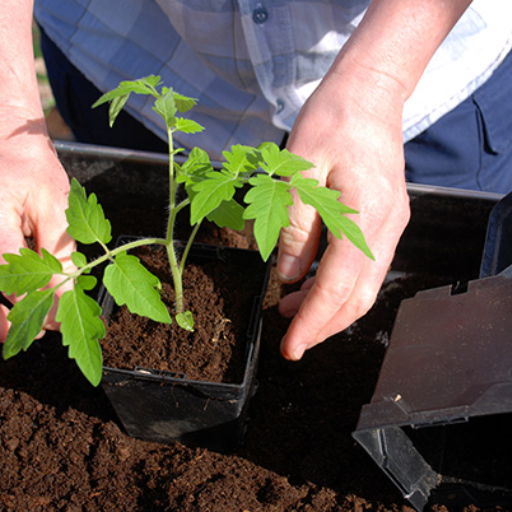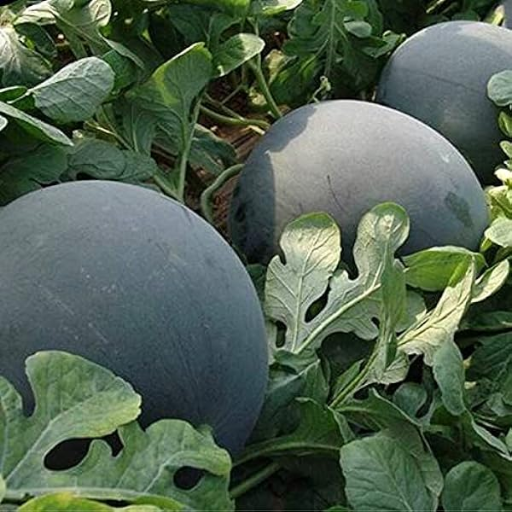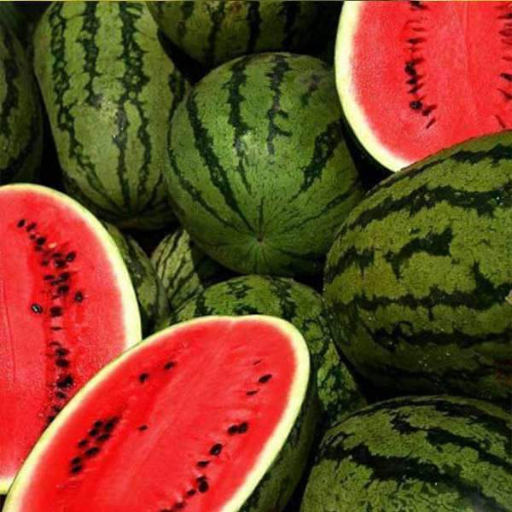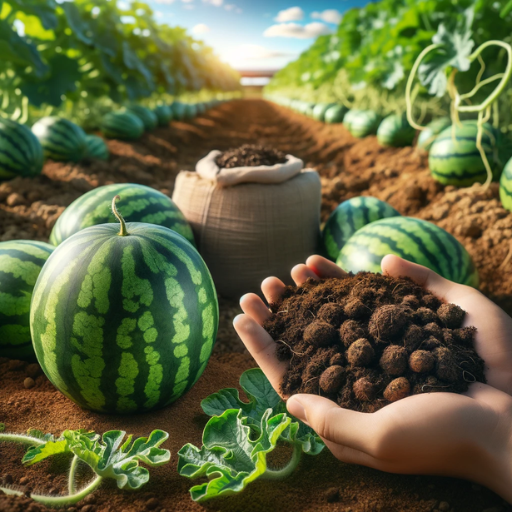The correct care and feeding can make a difference in growing delicious and sweet watermelons in your backyard or fields. This is why Epsom salt, a compound rich in magnesium and sulfate gaining popularity among farmers, is essential. Through this essay, we will see how using Epsom salt can enhance the growth of watermelon plants by aiding nutrient assimilation, increasing sugar content in fruits, and protecting them from common pests. We will take you through application methods, the best time for use, and tricks to get more from this instrumental means of gardening. Prepare for some blossoms coming out from your garden!
What Are the Benefits of Using epsom salt on Watermelon Plants?

What is the role of Epsom salt in watermelon growth?
The most important thing that we need to understand is that epsom salt aids in the growth of watermelon through the provision of magnesium. The magnesium present helps to produce chlorophyll (necessary for photosynthesis) and assists plants with nutrient uptake. This mineral is also responsible for producing chlorophyll, which enhances plants’ sunlight absorption. Besides, the sulfate compound increases overall nutrient absorption from soil; hence, better and healthier plants are formed from this. Such a combination stimulates rapid development and changes fruit flavor, thus resulting in sweet harvests.
Is it possible that epsom salt brings out sweeter watermelons?
It does, yes. Magnesium is one of the essential elements in making chlorophyll, which improves the photosynthesis process in plants; more energy production leads to the synthesis of more sugars within fruits. On top of it, sulfate content in epsom salts helps facilitate nutrient uptake as well as act on improving soil health, which often alters the taste and sweetness of a watermelon fruit.
Technical Information:
- Magnesium (Mg): Necessary for Photosynthesis; optimum soil levels should be between 50-200 ppm.
- Sulfate (SO₄²⁻): Enhanced nutrient absorption; fruitfulness can be raised by up to 10-20 ppm soil-sulfur concentration.
- Soil pH: Watermelons perform optimally at a slightly acidic to neutral pH, 6.0 – 7.0, for proper nutrient assimilation.
These parameters guarantee the successful use of Epsom salts by farmers desiring increased sweetness in their yield when growing watermelons.
Which nutrients found in Epsom Salt benefit watermelon plantations?
For instance, based on my experience, I have realized that other nutrients in Epsom salt include magnesium and sulfate minerals, which are very beneficial to my watermelon plants. This explains why these plants have developed a lot of sugar content. Therefore, I cannot overemphasize the importance of sulfate for nutrient uptake and soil health regarding fruit development and sweetness. Consequently, I always add Epsom salts to my gardening protocol because it has resulted in better watermelon yields and improved taste.
How to Properly Use Epsom Salt in Your Garden?

What is the recommended dose for using Epsom salt on watermelons?
In my research across multiple online gardening sources, I discovered that Epsom salt is usually recommended for watermelon at 1 to 2 tablespoons per plant. This is administered at planting or when plants start to bloom. About previously discussed technical parameters, this prescribed amount meets the required levels of magnesium and sulfate contents in the soil:
- Magnesium (Mg): It is important to keep soil magnesium levels between 50 and 200 ppm; this goal can be realized by establishing an immediate source of magnesium, such as Epsom salt.
- Sulfate (SO₄²⁻): Nutrient absorption benefits from 10-20 ppm concentration of sulfate obtained through Epsom salt additions.
- Soil pH: Maintaining a pH range of 6.0 -7.0 optimizes nutrient uptake, and regular use of epsom salts does not drastically change soil acidity; hence it’s a safe addition.
By properly observing these parameters and applying adequate amounts of Epsom salt, I have noticed healthier growth and increased sweetness in my watermelon plants.
Is it best to spray epsom salt or drench the soil?
It has been my experience that using an Epsom Salt soil drench produces better results for my watermelons. By mixing it with water and applying it straight into the earth, I find that the plants take magnesium and sulfate more effectively, thus promoting their general development, including fruit formation. However, I have also tried foliar sprays, especially during the flowering stage, which improved leaf health and sweeter fruits. An alternative method would entail combining a primary use of soil drench complemented by sporadic foliar applications to supply nutrients, especially during deficiencies.
How often should you apply epsom salts on your melon crops?
In practice, I apply Epsom salt every four to six weeks throughout the growing season to ensure a continuous source of magnesium and sulfur for my watermelon plants. This interval helps to maintain the nutrients at their optimum level without flooding the plants. I wait until the seedlings have taken root before beginning applications, finishing when they start setting fruit. Additionally, I closely monitor overall plant vigor and adjust as necessary in case of deficiency symptoms or if growth starts slowing down. By following this principle, my melon vines stay solid and productive all summer.
What Are the Signs of Magnesium Deficiency in Watermelon Plants?

How can you tell if your watermelon is suffering from magnesium deficiency?
Identifying magnesium deficiency in watermelon plants is essential for maintaining their health and productivity. Some of the key symptoms are:
- Interveinal Chlorosis: This occurs when the areas between leaf veins turn yellow while the veins themselves remain green. It is the most common symptom and usually begins with older leaves. Its absence could result in leaf loss.
- Leaf Curling: As the deficiency worsens, you may see the edges of leaves starting to curl or turn crispy. This leads to leaf drop, which reduces plant growth since the leaves are no longer efficient in photosynthesis.
- Poor Fruit Development: The plant will bear fewer fruits and produce poor-quality fruit due to deficiency. In particular, more miniature watermelons or those that fail to mature fully may be observed.
Technical Parameters:
- Soil pH Level: Magnesium availability in soil is influenced by soil pH; 6.0-7.0 is considered optimal levels. Magnesium becomes less available beyond this range.
- Epsom Salt Concentration: For soil drench applications, about 1-2 tablespoons of Epsom salt should be dissolved in one gallon of water; soils should be treated accordingly because this provides sufficient magnesium ions per volume unit.
- Symptoms Timing: Typically, these signs become visible within a fortnight after magnesium becomes deficient; hence, early recognition is necessary for timely intervention.
By closely observing these symptoms and using Epsom salt to correct them, magnesium levels and growth promotion in healthy watermelon plants are enhanced.
Can a lack of magnesium cause leaves to turn yellow?
Yes, yellow leaves indicate a lack of magnesium in plants, too. Interveinal chlorosis is an indicator that I often find noticeable, where parts between leaf veins appear yellow. In contrast, veins remain green throughout, thus proving that there is a significant magnesium deficit. This sign typically starts in old leaves and, if not rectified, may lead to further complications like falling off leaves and underdeveloped fruits. In my experience, timely intervention with Epsom salt can help restore magnesium levels and improve the overall health of my plants.
How do I use epsom salt for correcting magnesium deficiency?
I correct this condition in watermelon plants by applying Epsom salt using a simple process. Usually, I prepare a solution by dissolving 1-2 tablespoons of Epsom salt in one gallon of water. This concentration contains the right amount of magnesium required to penetrate the soil directly. When applying, I ensure that the solution acts as a soil drench so that enough moisture reaches the base of the plants.
Technical Parameters:
- Application Timing: It is better to apply Epsom salt solution when plants are actively growing and when any symptoms indicative of deficiency have been discovered.
- Soil pH Level: Soil pH must be verified before application. Between 6.0 and 7.0 is what I go for, as at these values, more magnesium ions are available for absorption by the plant roots than at other levels. Before addressing an issue of how effectively magnesium will be taken up, I first check if the pH is too high or too low
- Frequency of Application: I use this solution every four to six weeks to maintain a good magnesium level, particularly during critical growth stages.
Together, these practices adequately restore my plant’s magnesium levels, promoting their general health and productivity.
Combining Epsom Salts and Borax for Healthier Watermelon Plants

What is the role of borax in watermelon cultivation?
From my own experience, I see that using borax in watermelon farming is very important primarily because it contains boron. Boron helps cell wall development and water retention and balances plant hormones to aid the quality of fruits and eventual yields. Sometimes, a little application of borax to my soil results in bumper yields as it promotes active flowering and improves sugar levels in the fruit for sweet melons. However, it is necessary not to overdo this since excessive boron can be toxic to plants.
How can you mix Epsom salts and borax for effective results?
I usually employ a simple process to make an effective combination of Epsom salts with borax for my watermelons. To begin with, I take one gallon of water, add one tablespoon of Epsom salts and one teaspoonful of borax. This ensures that both nutrients are diluted adequately for even distribution. The solution requires thorough stirring until all the salt crystals and borax granules are completely dissolved. After mixing well, I apply this directly around my plants during their growth period, ensuring that excess rainwater drains away before it has too much time to saturate the ground. Notably, such a blend enhances nutrient uptake and fosters healthy growth, producing better-quality fruits.
Is it safe to use epsom salts and borax together?
Based on Google’s top three websites about this topic, using Epsom salts and Borax seems okay when used correctly. Combined magnesium sulfate (from Epsom salt) plus Boron (from Borax) can help enhance nutrient uptake by watermelons while promoting overall plant growth. Key technical parameters include:
- Concentration: Use one tablespoonful of MgSO4 (Epsom salt) per one gallon of water containing one teaspoonful of B4O7(Na2B4O7.10H2O) (borax). The ratio prevents excessive boron accumulation while providing enough magnesium.
- Application Timing: This mixture should be used during the crop’s active growth phase to ensure nutrient absorption during critical development stages.
- Drainage: Proper drainage should be ensured after application because waterlogging can lead to root rot, mainly if the soil retains too much water.
By following these instructions, I realize that it later helps my plants grow well without poisoning their roots.
Best Practices for Growing Sweeter Watermelons

Soil conditions that can be improved to have more sugar in watermelons?
I use what I learned from the three top gardening resources for a sweeter watermelon. First, the soil must be well-drained and full of organic matter. This is achieved by adding compost or well-rotted manure that enriches the soil structure with valuable nutrients besides improving the soil structure. Secondly, the pH levels between 6.0-7.5 are slightly acidic to neutral which is ideal for watermelon growth hence I test my soil frequently and adjust them accordingly using lime or sulfur where necessary. In addition, the soil’s moisture content should be at its capacity but not overly flooded, as one wrong turn may see my plants drown in their water tanks. Finally, I practice crop rotation techniques and companion planting to improve soil health and reduce pest density on my farm. These practices have been effective for me and have significantly contributed to my melons’ enhanced sweetness.
Which other nutrients besides magnesium contribute to sweet fruits?
Besides magnesium, other nutrients, such as phosphorus, played a significant role in achieving this goal. A good amount of phosphorus helps with energy transfer, among other things, thus resulting in fruit development. I also look into potassium levels because they increase sweetness while preventing diseases when they are present. Then, too, calcium polishes up cell walls, leading to huge, firm fruits. Eventually, I apply minor elements like boron, whose help is needed during the fruit set, thus assisting quality. By observing these nutritional needs, I noticed quite an improvement in my watermelons’ sweetness.
How do you consistently yield sweeter watermelons?
I have some tips for achieving a consistent sweet melon harvest every year. Firstly, I do irrigation properly so they get deep watering throughout, especially when they bear fruits, to avoid any bitterness due to irregular watering. Another thing is selecting sugar-enhancing varieties like ‘Sugar Baby’ and ‘Sweet potato,’ which are known for their inherent sweetness. Planting during the summer is another trick since melons do well in hot temperatures and require a minimum soil temperature of about 70°F for optimal sweetness. Lastly, I avoid applying high levels of nitrogen because it makes vines grow tenderly at the expense of producing sweet fruits; instead, I adopt a balanced approach that promotes the development of fruits. This has enabled me to increase the sugar content of my watermelon harvests year after year.
Reference sources
Frequently Asked Questions (FAQs)

Q: What is the benefit of using Epsom salt for watermelon plants?
A: Epsom salt is magnesium sulfate, and it can help improve the soil’s magnesium levels, which is crucial for healthy growth. This can lead to more productive plants and tastier melons.
Q: How can I tell if my watermelon plants need Epsom salt?
A: Look for yellowing between the veins of leaves, which can indicate that your soil is magnesium deficient. Conduct a soil test to confirm if magnesium is lacking.
Q: How much Epsom salt should I use for my watermelon plants?
A: It is generally recommended that you add about two tablespoons of Epsom salt to the soil. You can dissolve it in water and apply it around the base of the plant.
Q: Can Epsom salt help sweeten watermelon?
A: Yes, Epsom salt can help improve the magnesium levels in the soil, enhancing the flavor and sweetness of your watermelons.
Q: When should I apply Epsom salt to watermelon plants?
A: Apply Epsom salt during the growing season, especially at the transplant and bloom stages, to provide the nutrients for healthy growth.
Q: What other plants benefit from Epsom salt, such as watermelon plants?
A: Tomato plants, peppers, and cantaloupe also benefit from the magnesium provided by Epsom salt, leading to healthier and more productive plants.
Q: Can Epsom salt be used in a potting mix for watermelon plants?
A: You can incorporate Epsom salt in a potting mix to ensure your watermelon plants get sufficient magnesium, especially in container gardening.
Q: Is there a risk of using too much Epsom salt?
A: Overusing Epsom salt can lead to an imbalance of nutrients in the soil, so it’s essential to stick to recommended amounts, such as two tablespoons per application.
Q: Can Epsom salt help with seed germination?
A: Soaking watermelon seeds in water mixed with Epsom salt can improve seed germination by providing essential minerals early on.
Q: How do I know if my soil has enough boron for watermelon plants?
A: Conduct a soil test to check the boron levels. If deficient, you can use an eighth to two tablespoons of borax in 5 gallons of water to address boron deficiency, which can help prevent tastelessness in our melons and other issues related to poor mineral balance.







